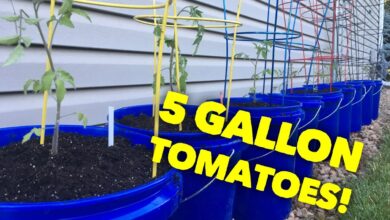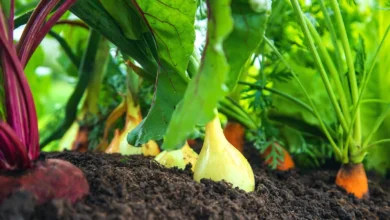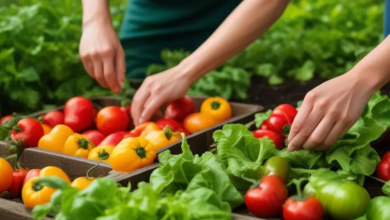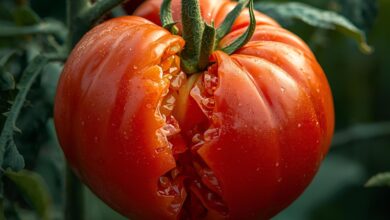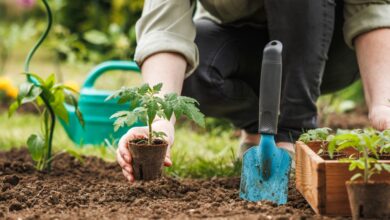When to Plant Spring Vegetables State-by-State Planting Guide
Discover when to plant spring vegetables with our comprehensive state-by-state guide. Learn optimal planting times, frost dates, and regional tips.
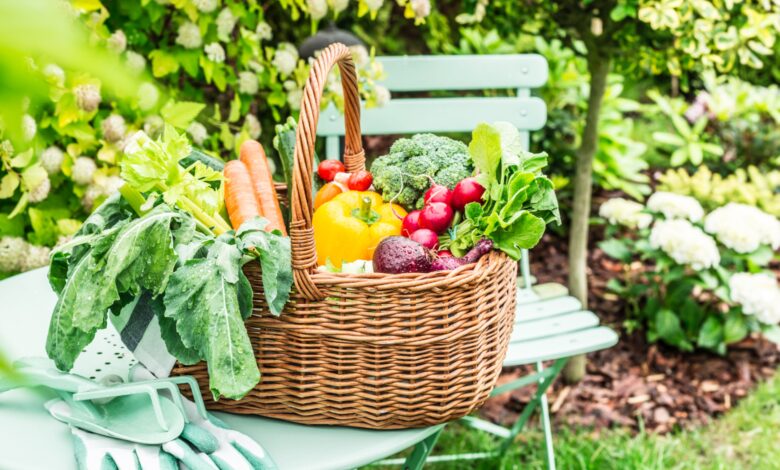
Plant Spring Vegetables is the cornerstone of successful gardening across the United States. The timing of your plantings can dramatically affect germination rates, plant health, and harvest quality. Whether you’re a seasoned gardener or just starting your first vegetable patch, knowing the optimal spring planting times for your specific location ensures maximum productivity and reduces frustration.
Spring vegetables offer unique advantages that make them essential for any garden. These cool-season crops—including lettuce, spinach, peas, broccoli, carrots, and radishes—thrive in the moderate temperatures of spring, often producing superior flavor compared to summer-grown vegetables. They establish strong root systems before heat arrives and can tolerate light frosts, allowing early planting that extends your harvest season by weeks or even months.
The United States encompasses extraordinary climatic diversity, from Alaska’s brief growing season to Florida’s year-round gardening opportunities. This variation means planting schedules differ dramatically by region. A Minnesota gardener faces vastly different conditions than someone in Texas or California. Understanding your USDA hardiness zone, local frost dates, and regional climate patterns forms the foundation of successful spring vegetable planting.
USDA hardiness zones provide a standardized framework based on average minimum winter temperatures, helping gardeners determine appropriate planting times. However, zones alone don’t tell the complete story. Microclimates created by elevation, proximity to water, urban heat islands, and local topography can shift planting dates by several weeks within the same zone. This guide provides detailed, state-by-state recommendations that account for these regional variations.
This comprehensive resource breaks down spring planting times for every region, offering practical advice on soil preparation, frost date interpretation, and crop selection. You’ll discover exactly when to start seeds indoors, transplant seedlings, and direct-sow for optimal results in your specific location. Whether planting your first garden or refining decades of experience, understanding precise timing transforms uncertainty into confidence and mediocre results into abundant harvests.
USDA Hardiness Zones and Frost Dates
The USDA Plant Hardiness Zone Map divides North America into 13 zones based on average annual minimum winter temperatures, each representing a 10-degree Fahrenheit difference. These zones, ranging from Zone 1 (below -50°F) to Zone 13 (above 60°F), provide essential guidance for when to plant spring vegetables. Most of the continental United States occupies Zones 3-10, creating diverse growing conditions across the nation.
Your hardiness zone directly correlates with last spring frost dates, which fundamentally determine safe planting windows. The last frost date represents the average date of the final freezing temperature in spring. Northern zones (3-5) typically experience last frosts from mid-May through early June. Mid-latitude zones (6-7) see final frosts from mid-April through early May. Southern zones (8-10) often have last frosts in February or March, with some coastal areas rarely freezing.
Cool-season vegetables can be planted 4-6 weeks before the last expected frost date, as these hardy crops tolerate and prefer cooler temperatures. Vegetables like peas, lettuce, spinach, kale, and radishes survive light frosts without damage. For Zone 5 gardens with a May 15 last frost date, this translates to early-to-mid April planting. In Zone 8 with a March 15 last frost date, planting begins in early February.
Soil temperature often matters more than air temperature for planting success. Northern zones experience gradual soil warm-up, with temperatures remaining below optimal germination levels until late April or May. Southern zones benefit from rapid soil warming by February or March. This explains why identical calendar dates produce drastically different results across zones—mid-March planting succeeds in Zone 8 but fails in Zone 4 where soil remains cold and waterlogged.
Microclimates add important complexity. Urban areas typically register 1-2 zones warmer than surrounding rural regions due to heat retention. Coastal locations experience temperature moderation from water bodies. Valley bottoms accumulate cold air, experiencing frost weeks after nearby hilltops. These variations mean two gardens in the same zone might have planting dates differing by 2-3 weeks. Successful gardeners combine zone information with local observation and soil temperature monitoring for optimal results.
Cool-Season vs. Warm-Season Vegetables
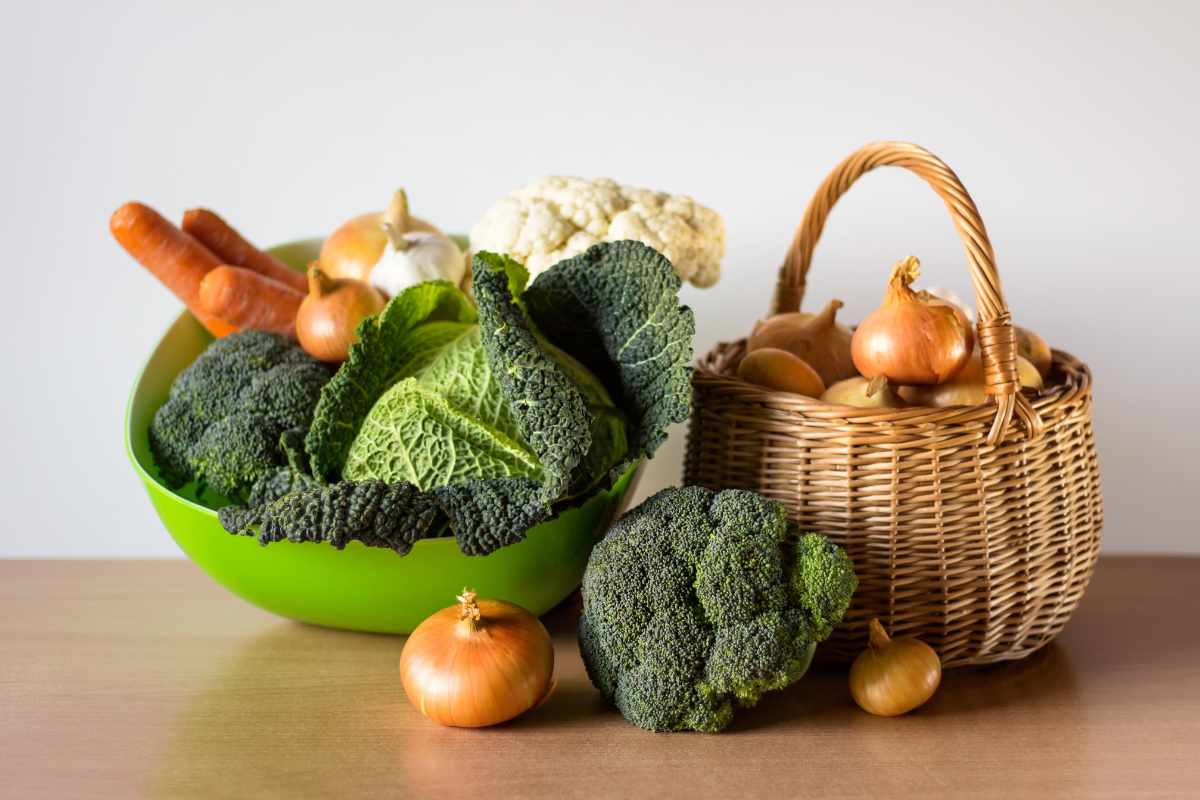
Understanding the distinction between cool-season vegetables and warm-season crops is critical for spring planting success. These categories have dramatically different temperature requirements and frost tolerance levels.
Cool-Season Vegetables
Cool-season crops thrive in temperatures between 40°F and 75°F, with optimal growth at 60-70°F. These vegetables tolerate light frosts (28-32°F) and many hardy varieties withstand temperatures as low as 20°F. This category includes leafy greens (lettuce, spinach, kale), brassicas (broccoli, cabbage, cauliflower), root vegetables (carrots, beets, radishes), legumes (peas), and alliums (onions, leeks).
These crops must mature before temperatures consistently exceed 75-80°F, as heat causes bolting—rapid flowering that makes leaves bitter and inedible. Spring planting should occur 6-8 weeks before the last frost date for transplants, or 4-6 weeks before for direct-seeded crops. Quick-maturing vegetables like radishes (25-30 days) and lettuce (45-60 days) work perfectly for succession planting every 2-3 weeks for continuous harvests.
Warm-Season Vegetables
Warm-season crops require soil temperatures above 60°F and thrive when daytime temperatures reach 70-80°F or higher. This category includes tomatoes, peppers, cucumbers, squash, melons, beans, and corn. These crops have zero frost tolerance—even brief exposure to 32°F causes severe damage or death. Planting in cold soil results in seed rot, disease, and stunted growth.
Warm-season planting begins only after the last frost date passes—typically 1-2 weeks afterward to ensure adequate soil warming. In Zone 5, this means late May or early June. Zone 7 gardeners transplant in early-to-mid May, while Zone 9 locations can plant in late March or April. Starting seeds indoors 6-8 weeks before transplanting gives plants a substantial head start.
Regional Plant Spring Vegetables Guide
Northern States (Zones 3-5)
Last Frost Dates: Mid-May to early June
Northern gardeners face short growing seasons requiring strategic timing and season extension techniques. Start brassicas indoors in mid-March for transplanting in early May. Direct-sow hardy cool-season crops (peas, spinach, lettuce) in late April to early May once soil reaches 40°F. Plant carrots, beets, and radishes in mid-to-late May when soil warms to 50°F.
The 90-120 day growing season demands short-season varieties: 50-day lettuce, 55-day peas, 60-day carrots, 70-day broccoli. Use black plastic mulch, row covers, and raised beds to advance planting dates by 1-2 weeks. States include Alaska, Maine, Vermont, New Hampshire, Minnesota, Wisconsin, North Dakota, Montana, and high-elevation areas of Wyoming, Idaho, and Colorado.
Mid-Atlantic and Midwest (Zones 5-7)
Last Frost Dates: Mid-April to mid-May
This region enjoys balanced growing seasons with time for both cool-season and warm-season vegetables to mature fully. Begin Plant Spring Vegetables in early April with peas, spinach, lettuce, and radishes once soil reaches 40-45°F. Plant onion sets and seed potatoes in early April. Transplant brassicas in mid-April with row cover protection if needed.
Direct-sow carrots, beets, and parsnips in mid-April. The 150-180 day growing season permits succession planting every 2-3 weeks through May for continuous harvests. Transition to warm-season planting in mid-to-late May. States include Pennsylvania, New York, New Jersey, Maryland, Delaware, Virginia, West Virginia, Ohio, Indiana, Illinois, Michigan, Iowa, Nebraska, Kansas, and Missouri.
Southern States (Zones 7-9)
Last Frost Dates: Late February to mid-March
Southern gardeners must plant early before rapid spring warming triggers bolting. Coastal and lowland areas begin Plant Spring vegetables late January or early February with peas, lettuce, spinach, and radishes. Brassicas and root vegetables follow in mid-February. Mountain areas delay planting 4-6 weeks.
Plant lettuce and radishes every 2 weeks from February through March for continuous harvests. Transition to heat-tolerant varieties by late March in coastal areas, mid-April inland. Many southern gardeners find fall planting more successful for cool-season crops due to gradual cooling versus rapid spring warming. States include North Carolina, South Carolina, Georgia, Alabama, Mississippi, Louisiana, Arkansas, Tennessee, and most of Texas.
Florida (Zones 8-11)
Last Frost Dates: December to February (varies by region)
Florida’s subtropical climate reverses traditional growing seasons. South Florida (Zones 10-11) plants cool-season vegetables from November through January, with spring too hot for most crops. Central Florida (Zones 9-10) plants from October through January. North Florida (Zone 8-9) begins in February.
Focus spring efforts on harvesting winter-planted crops and establishing heat-tolerant warm-season vegetables. Plant tomatoes, peppers, and eggplants in late winter for spring harvest. By April-May, most of Florida becomes too hot for productive vegetable gardening until fall.
Western States (Zones 4-10)
Western states present extraordinary diversity requiring region-specific approaches.
- Pacific Northwest (Zones 6-9): West of the Cascades, begin Plant Spring Vegetables in late February or March with peas, lettuce, and brassicas. The mild, extended cool period allows continuous planting through May. East of the Cascades, wait until April with last frost in early-to-mid May.
- California (Zones 5-11): Coastal areas plant from February through April with year-round cool-season production possible. Interior valleys plant February-March, with crops maturing by May before intense heat. Southern California plants November-February, with spring too hot for most cool-season crops.
- Desert Southwest (Zones 7-10): Arizona and Nevada plant cool-season crops from January to February, which must mature before March/April heat. Northern areas and high elevations plant April-May. All desert gardening requires irrigation and often shade structures.
- Mountain West (Zones 4-7): Colorado, Utah, New Mexico, and high-elevation areas wait until mid-to-late May for planting. The 90-120 day season demands short-season varieties, but intense solar radiation accelerates growth by 5-10 days. Use season extension extensively.
Best Spring Vegetables by Region

Universal Cool-Season Crops
Several Plant Spring Vegetables succeed nationwide when planted at appropriate times: Lettuce (45-65 days), spinach (40-50 days), radishes (25-30 days), peas (60-75 days), and kale (55-75 days) thrive in all zones with proper timing.
Northern Region Favorites
Cold-climate gardeners should focus on brassicas (broccoli, cabbage, cauliflower) that thrive in extended cool periods. Root vegetables (carrots, beets, turnips) appreciate cool soil. Leafy greens and short-season varieties of all crops are essential. Choose varieties with days-to-maturity under 75 days.
Southern Region Favorites
Southern gardeners need quick-maturing varieties completing growth before heat arrives. Bolt-resistant lettuce, fast-maturing Asian greens (bok choy, mizuna), and heat-tolerant spinach extend harvests. Collard greens and mustard greens tolerate heat better than other brassicas. Focus on disease-resistant varieties due to humidity.
Western Region Favorites
Pacific Northwest excels with all brassicas, peas, and leafy greens in its cool, moist climate. California’s coast produces exceptional lettuce and artichokes. Mountain West requires short-season varieties of all crops. Desert Southwest needs heat-tolerant varieties and shade structures for extending cool-season production.
Soil Preparation and Temperature Management
Successful Plant Spring Vegetables requires proper soil preparation and temperature monitoring. Test soil moisture before working—if squeezed soil forms a tight ball that doesn’t crumble, wait several days. Working wet soil destroys structure and causes compaction lasting all season.
Once soil is workable, add 2-4 inches of compost or well-rotted manure and work into the top 6-8 inches. Cool-season vegetables prefer nutrient-rich, well-drained soil with pH 6.0-7.0. Allow amended soil to settle 7-10 days before planting.
Monitor soil temperature using a soil thermometer at 2-4 inch depth. Cool-season crops germinate at 40-50°F but grow faster at 60-70°F. Warm-season vegetables require 60°F minimum, preferably 70°F+. Don’t rely on air temperature alone—soil lags behind by several weeks in early spring.
Accelerate soil warming using black plastic mulch (raises temperature 5-10°F), raised beds (warm 1-2 weeks earlier), and row covers (increase air temperature 2-8°F). These techniques advance planting dates by 1-3 weeks in northern climates.
Starting Seeds Indoors vs. Direct Sowing
- Indoor seed starting extends the growing season by giving plants a head start. Begin brassicas 6-8 weeks before the last frost date. This produces larger transplants that mature earlier than direct-seeded crops. Start warm-season vegetables indoors for transplanting after frost danger passes.
- Direct sowing works best for crops that resent transplanting—root vegetables (carrots, beets, radishes, parsnips) develop better from direct-seeding. Fast-maturing crops like lettuce, spinach, and radishes often mature just as quickly from outdoor sowing. Peas and beans establish more vigorously from direct-seeding.
For direct-sowing success, wait until soil temperatures reach appropriate levels. Sow seeds at proper depths (generally 2-3 times seed diameter) and keep soil consistently moist until germination. Thin seedlings to proper spacing once true leaves develop.
Many gardeners combine both methods: start long-season crops like brassicas and lettuce indoors while direct-sowing quick-maturing or transplant-sensitive crops like radishes, peas, and carrots. This maximizes harvests and utilizes available space efficiently.
Succession Planting for Continuous Harvests
- Succession planting involves sowing small quantities of fast-maturing crops at regular intervals rather than planting everything at once. This provides continuous, manageable harvests over extended periods instead of overwhelming abundance followed by scarcity.
- Radishes (25-30 days) represent the ideal succession crop—plant every week for continuous harvests. Lettuce (45-60 days) and spinach (40-50 days) work excellently planted every 2-3 weeks from early spring through late spring. Arugula (40 days), Asian greens (45-50 days), and mustard greens (40-50 days) mature quickly and respond well to succession planting.
- Carrots (60-80 days) and beets (50-70 days) can be succession-planted every 3 weeks, though their longer maturity requires more space. Peas (60-70 days) benefit from 2-3 succession plantings spaced 2-3 weeks apart, though spring’s short cool season limits planting windows.
Create a succession planting calendar based on your last frost date. Mark initial planting dates 4-6 weeks before last frost for hardy crops, then schedule subsequent plantings at appropriate intervals. Set calendar reminders to ensure timely plantings. As early plantings reach harvest, remove spent plants immediately and prepare soil for the next succession.
Common Spring Planting Mistakes to Avoid
- Planting too early in cold, wet soil is the most common mistake. Seeds rot, transplants suffer shock, and growth stalls. Wait for proper soil temperature and workable moisture levels rather than relying solely on calendar dates.
- Ignoring microclimates leads to mistimed plantings. A south-facing raised bed may be ready 2 weeks before a north-facing low spot. Monitor conditions in specific planting areas rather than assuming uniform readiness across your garden.
- Overcrowding plants reduces air circulation, increases disease, and limits growth. Follow spacing recommendations even when seedlings seem tiny—plants grow larger than expected. Thin direct-seeded crops ruthlessly to proper spacing.
- Neglecting succession planting results in brief gluts followed by empty beds. Plant small quantities every 2-3 weeks rather than everything at once. This maximizes productivity and provides continuous fresh vegetables.
- Wrong crop selection causes frustration. Choose varieties appropriate for your zone and season length. Northern gardeners need short-season varieties; southern gardeners need heat-tolerant, bolt-resistant types. Research variety-specific requirements before purchasing seeds.
Season Extension Techniques
- Row covers (floating row covers) protect plants from frost, wind, and pests while creating a warmer microclimate. Lay lightweight fabric directly on plants or over hoops. Remove when temperatures consistently exceed 75°F to prevent overheating.
- Cold frames are bottomless boxes with transparent tops that capture solar heat. They warm soil faster and protect transplants from wind and frost. Vent on sunny days to prevent overheating.
- Cloches and Wall O’ Water protectors surround individual plants, providing frost protection and warmth. These work excellently for early tomato and pepper transplanting, advancing planting dates by 2-3 weeks.
- Black plastic mulch warms soil 5-10°F faster than bare ground and suppresses weeds. Lay plastic 2-3 weeks before planting for maximum effect. Cut holes for transplants or remove strips for direct-seeding.
- Raised beds drain better and warm 1-2 weeks earlier than in-ground gardens. Build beds 8-12 inches high for best results. Combining raised beds with black plastic and row covers can advance planting dates by 3-4 weeks in northern climates.
Also Read: 15 Vegetables That Grow in Shade (No Full Sun Required)
Conclusion
Plant Spring Vegetables transforms gardening from guesswork into a predictable, successful endeavor. By considering your specific USDA hardiness zone, monitoring last frost dates, preparing soil properly, and choosing appropriate crops for your region, you’ll achieve abundant harvests year after year. Cool-season vegetables planted at optimal times produce superior flavor and yields compared to mistimed plantings. Whether you garden in Alaska’s Zone 3 or Florida’s Zone 10, following these regional guidelines ensures your spring vegetable planting succeeds. Start planning now using your local frost dates, prepare your soil as conditions allow, and enjoy the satisfaction of harvesting fresh, homegrown vegetables from your perfectly-timed spring garden. Remember that gardening success comes from combining scientific knowledge with observation and experience—use this guide as your foundation and refine your timing through seasons of hands-on learning.


